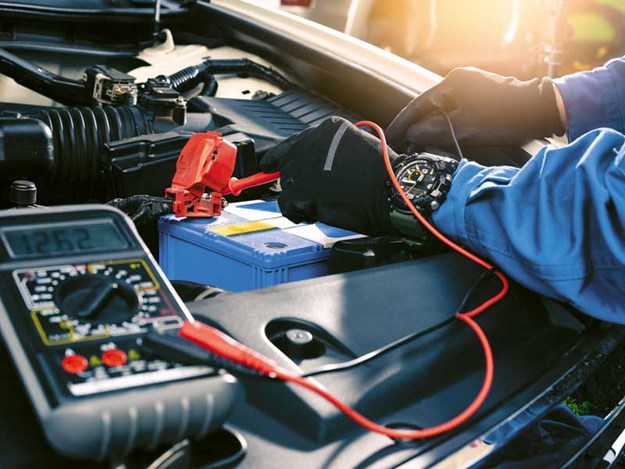Worldwide demand for batteries for energy storage and as a source of energy is an increasing. Aviation, marine, military, government and commercial arenas through to DIY users and RV’ers are all using more batteries.

Lead acid (eg car batteries) and sealed chemical batteries (eg AA torch batteries) are rapidly being superceded by modern technology, with variations that have been developed to overcome fundamental flaws in lead acid battery design. Lead crystal batteries are another innovation treading this well worn path to perfection.
Lead acid battery variations
Among the lead acid battery variations in common use in RVs today are: sealed lead acid (SLA), gel electrolyte, absorbent glass mat (AGM), and lead calcium batteries, as well as the new star on the block, the lithium ion battery. These advances in battery design are aimed at overcoming fundamental flaws in lead acid battery design.
Lead crystal technology
Using the AGM battery as a start point, the lead crystal design team set out to eliminate the inherent shortcomings in existing AGM batteries. A crystalline silicon dioxide electrolyte that replaces the traditional acid/water electrolyte is the essence of this new lead crystal technology.
It eliminates uneven electrolyte distribution throughout the battery, resulting in more reliable performance by reducing or eliminating plate sulphation, active material loss, and electrolyte loss. Net result: improved battery life.
Unlike regular lead acid batteries and their derivatives, the crystalline silicon dioxide-based electrolyte in lead crystal batteries does not remain liquid. After the first charge the electrolyte crystallises so there is virtually no liquid, minimal evaporation or sulphation and no liquid to heat up on charge or discharge, all factors that help prolong the battery life.
Eco-friendly

On the recyclability front, lead crystal batteries are rated very good, but the only detail to support that claim is that they don’t contain antimony or cadmium and the sulfuric acid content is less than five percent.
According to lead crystal battery manufacturer Betta Batteries Hong Kong, “lead crystal batteries are a much safer battery, with an 85 percent-plus reduction in harmful chemicals.” Note that the technology surrounding lead crystal batteries is protected.
Battery weight is around 10 percent heavier than the same capacity SLA or AGM battery. Lead crystal batteries are safe to transport, safe to handle and are a very low fire risk.
Price
Currently 100 Ahr lead crystal batteries retail for around $700, twice the price of SLA or AGM battery of the same capacity. Given that they’re easily maintained and have a life expectancy of eight to 10 years, lead crystal batteries have a lot in their favour.
Lithium ion batteries are likely to rule the world in the future, but meantime this lead crystal technology looks like a good stepping stone from SLA, gel and AGM batteries and on into the future.
Measuring performance
When measured against lead acid batteries and their newer derivatives, lead crystal batteries perform very well;
- Faster charge/discharge rates without damaging the battery. Claimed 93 percent charge efficiency, 15 percent better than the best lead acid varieties.
- Deeper discharge, eg1400 cycles @ 80 percent depth of discharge (DOD)
- Frequent partial charging without battery damage.
- Low gassing eliminates the need for special venting/cooling.
- Can be charged at 0°C and operate between -5°C and +50°C.
- Very low rates of self-discharge when not in use. At 25°C ambient temperature the battery will retain 80 percent of its rated capacity after 12 months on the shelf.
- The ability of lead crystal to cope with a deeper discharge and accept a faster charge regime means the user can opt for a smaller amp hour (Ahr) capacity battery for the job at hand. For example, a 65Ahr lead crystal battery discharged to 80 percent will produce 52Ahr compared with a 100Ahr regular lead acid battery discharged to 50 percent, producing 50Ahr.
If the lead crystal replacement battery has a 100 Ahr capacity and is subjected to a 50 percent DOD regime, the manufacturers claim a battery life of around 2900 recharge cycles. That equates to 290 recharge cycles for 10 years.
Like regular lead acid batteries and their derivatives, lead crystal batteries need battery chargers that have the correct charge profile.





